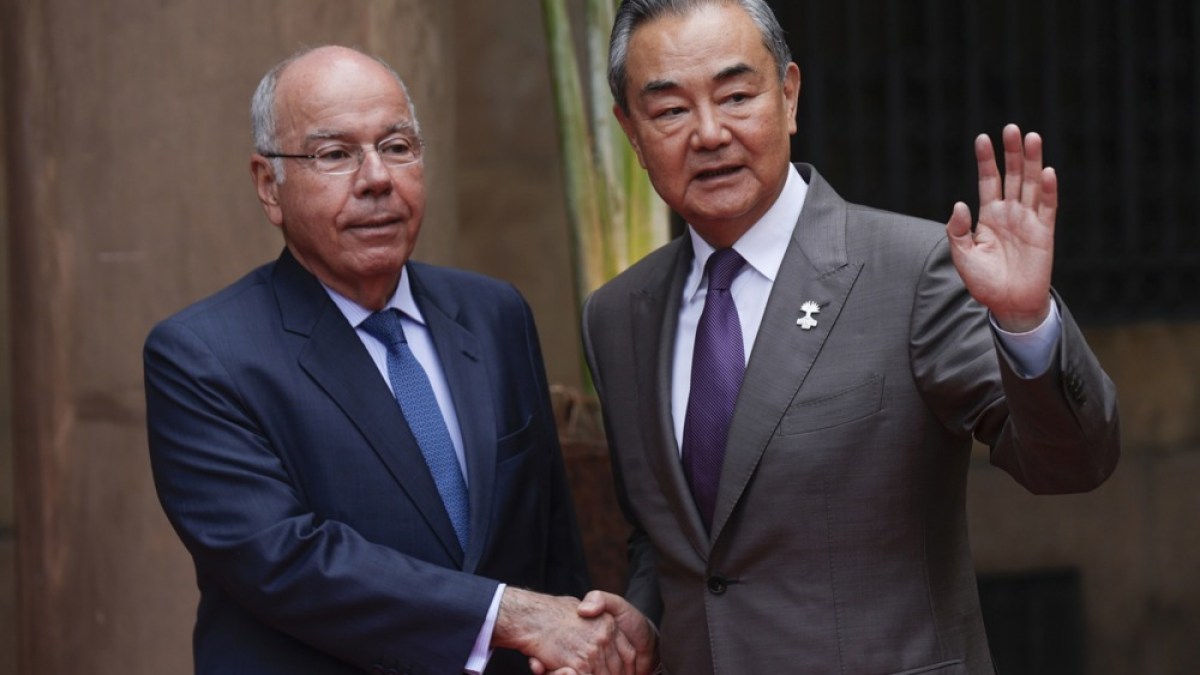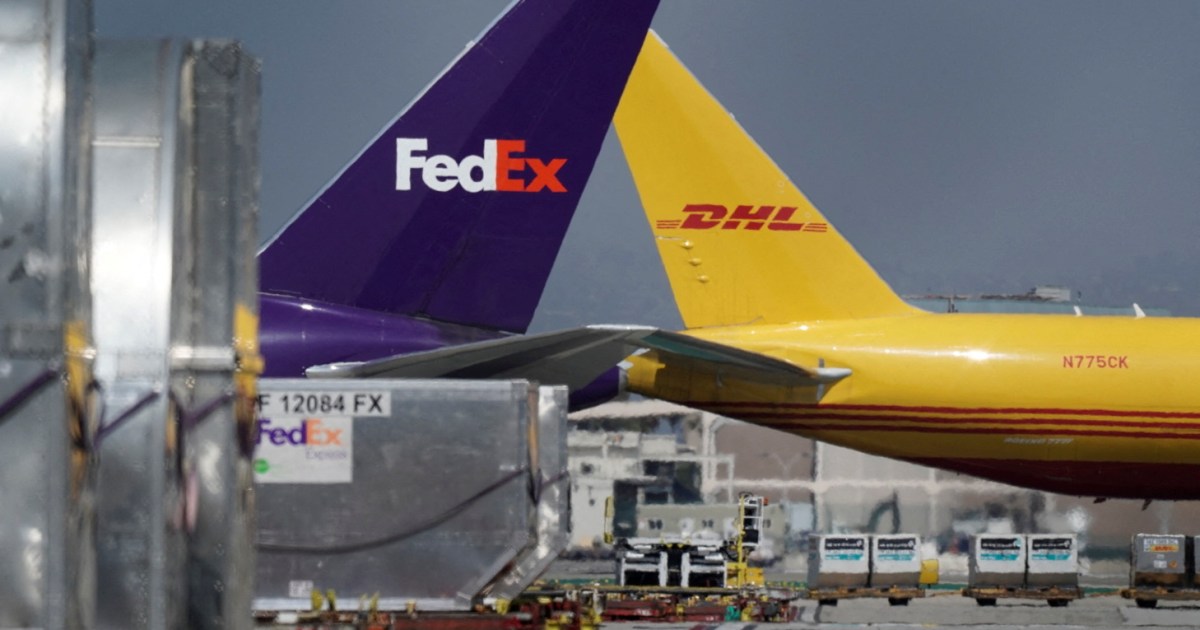Anuj Gupta sits in a corner of his shop in the middle of a crowded market in the Indian capital as the silence lingers over it.
Gupta purchases and exports laces and buttons for clothing and supplies them to major global companies. Gupta’s business has been torn down by the punishing tariffs that Donald Trump has imposed.
After the Trump administration threatened to double the levies from 25% over India’s purchase of Russian oil, the country was awakened to 50% tariffs on its goods sold to the US on Wednesday morning. According to the White House, Prime Minister Narendra Modi’s administration is financing Moscow’s conflict in Ukraine from Russia, which is one of the biggest buyers of Russian crude. Washington has been accused of having two standards by Indian officials, citing both how Russia and the EU both buy more from each other and how Moscow still trades.
According to Gupta, the cycle repeats year after year in the fashion industry: clothing is currently being created and designed for the fall of 2026. Therefore, he claimed, the market’s “hugging uncertainty” has “hampered the work severely” and caused a “big dent.” His US-based business accounts for 40% of its revenue.
Gupta claimed he was still hopeful even up until Wednesday morning. He speculated that Trump may be just bullying us for optics, or that Modi’s positive relationship with the US might help. “But we received the worst treatment.”
Five negotiations have failed to produce a trade agreement between Washington and New Delhi, according to Gupta, and exporters are now concerned that their customers will abandon India altogether. Buyers would look for alternative markets for sourcing, he said, “If these tensions continue to grow.”
Analysts and economists fear that the tariffs will devastate key export-driven sectors of the Indian economy, with hundreds of thousands of jobs in danger as New Delhi grapples with Trump’s actions, which turn the US away from two decades of diplomatic and strategic investments in India.
It’s so helpless, they say.
After meeting the nation’s finance minister, Nirmala Sitharaman, and other party leaders on Thursday, Ajay Sahai, the CEO of the largest government-backed body of Indian exporters, was cautiously optimistic of assistance from the Modi administration.
Sahai told Al Jazeera, “The government has fully assured us that they will provide all kinds of support needed to solve this problem, perhaps even an economic package.”
He claimed that the government had requested that we prepare a report and that they would then develop a scheme. Sitharaman has assured us that there won’t be layoffs, which we should respect.
That’s still simpler to say than to do, though.
Some of India’s biggest exports to the US are expected to include shrimp, textiles, gems, jewelry, carpets, and other items that are likely to suffer the most from the tariffs.
In a coastal town in Andhra Pradesh’s state on the Bay of Bengal, K. Anand Kumar, the head of Sandhya Marines, which exports shrimp and employs nearly 3,500 workers, claimed that his company is in danger of dissolving.
The US market is where his company’s cargoes are more than 90% of.
India exported a record-breaking 1.78 million tonnes of seafood worth $7.38 billion last year. Shrimp accounts for 92% of the overall value. Additionally, US shrimp shipments account for more than 40% of India’s total.
Small farmers make up the shrimp industry, according to Kumar, who also serves as the chapter leader of the seafood export association in Andhra Pradesh. Nearly two million people are connected to shrimp exports, according to Kumar, taking everyone into account.
More than 50% of those workers, according to Kumar, will bear the brunt of Trump’s tariffs directly.
According to Kumar, “We are already laying off because we can’t keep paying our salaries without receiving any orders,” Because there is no work available to them right now, “the small farmers who peel the shrimp will be the worst affected.”
Exporter associations believe that the tariffs could have an impact on nearly 55 percent of India’s $87 billion in-exports of goods and hurt rivals like Vietnam, Bangladesh, and China, who have experienced lower tariffs.
According to Moody’s Ratings, Trump’s import tariffs may stymie India’s economic growth. The significantly larger tariff gap than other Asia-Pacific nations, according to the ratings agency, would severely impede India’s efforts to grow its manufacturing sector and possibly stifle some of the recent gains in attracting related investments.
It’s like being in a nightmare, according to Kumar, where you can’t predict what new, random tariff number to pick up next.
According to Kumar, the crisis feels uncharted in the last 30 years of business in the US. He claimed that “the US is toying with us” and that they could pursue any of their interests. And we must adjust, too. It seems so helpless.

Embargo on Indian goods
Tiruppur, a town in Tamil Nadu’s southern state, is home to the country’s garment exporting industry, which is nearly 1, 000 kilometers (620 miles) away from Kumar’s factory.
Tiruppur, which is situated along the Noyyal River and close to rocky hillocks, accounts for nearly a third of the total $ 16 billion in ready-to-wear exports. The name “Dollar City” comes from Tiruppur’s US earnings, which it has earned. The top fashion houses in the world, including Gap and Zara, come from here.
However, a prolonged crisis could cripple some businesses, according to V Elangovan, managing director of SNQS International Group, an exporter of clothing, while higher margins in the case of big brands give them temporary breathing room.
The production has completely been stopped, he said, “wherever margins are lower.” Elangovan’s business has 1,500 employees worldwide. According to him, due to Trump’s tariffs in Tiruppur, about 150 000 workers are likely to lose their jobs.
In this economy, he said, “It’s very challenging to find new customers.” Customer diversification is not a switch that we can turn on and off, but rather a switch. We will soon be looking at cash flow issues and there will be a lot of employee turnover.
Modi’s stance on the US trade war has meanwhile been defiant.
In his Independence Day speech from New Delhi’s Red Fort on August 15, Modi declared that India “should become self-reliant.” “Economic selfishness is on the rise globally, and we mustn’t sit and cry about our difficulties,” he said.
“Modi will oppose any policy that threatens their interests like a wall.” The prime minister made a pledge to India to protect the interests of its farmers, indirectly referring to trade frictions with the US, which demands greater market access for India’s dairy and agricultural sectors. Nearly half of India’s 1.4 billion people depend on agriculture for their livelihood.
However, traders worry that the deal could leave them bleeding.
Elangovan claimed that the government allows us to be slashed in one eye to save the other. A 50% tariff on Indian goods is essentially an embargo.





